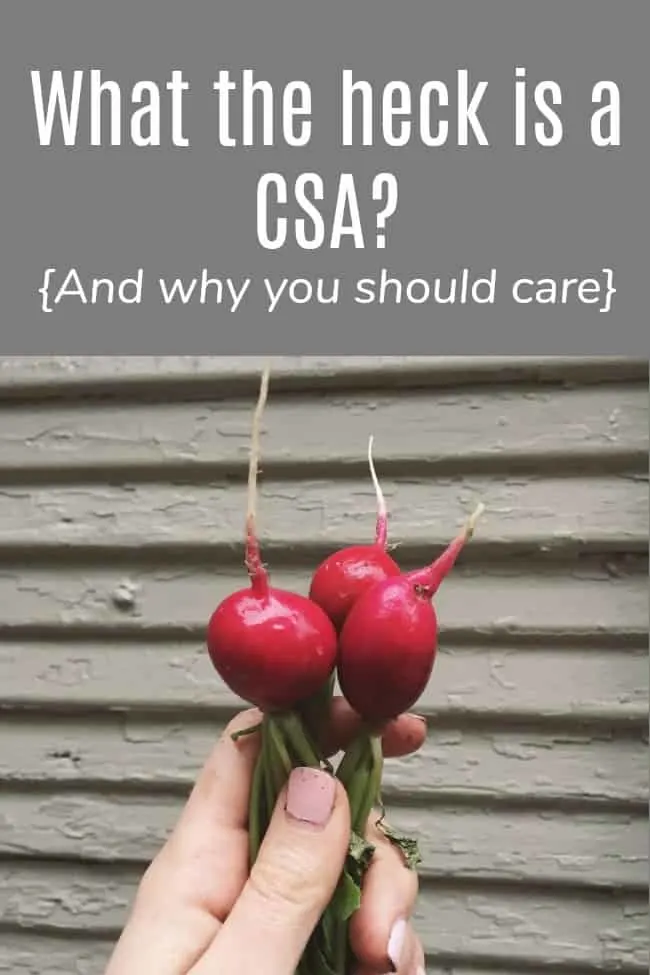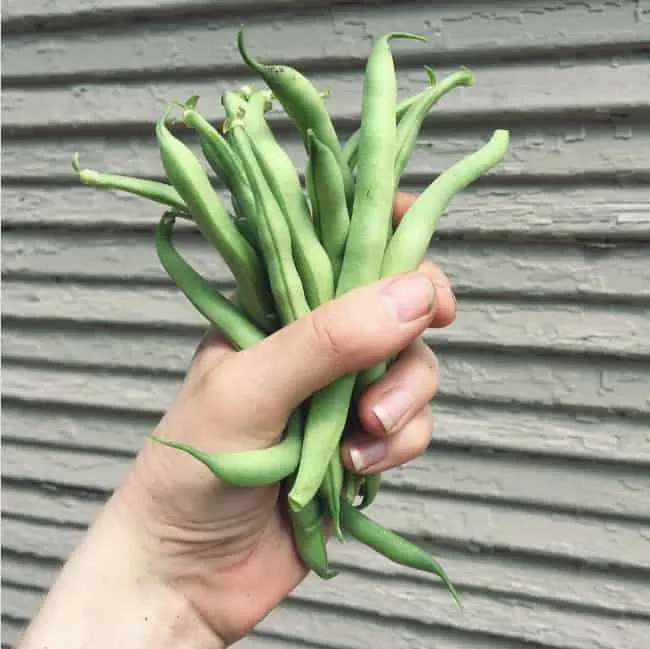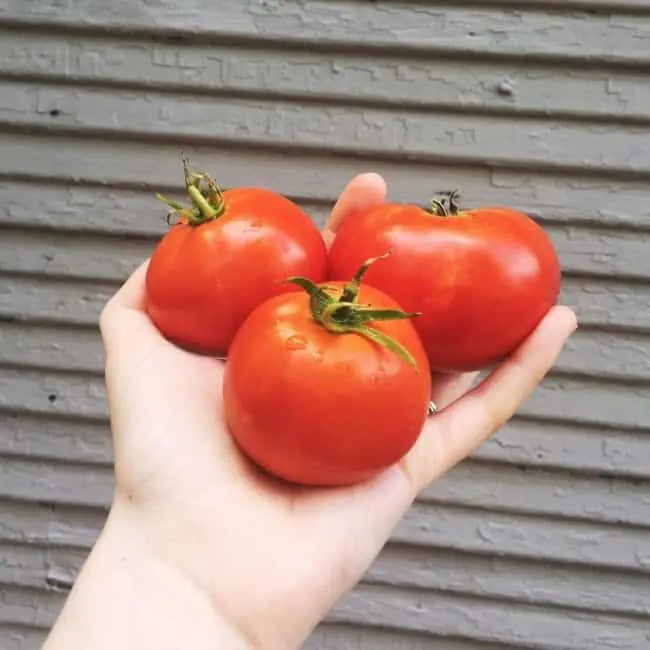What is a CSA (Community-Supported Agriculture) and why should you care about it? So glad you asked!
In 2017, Alex and I participated in our first year as members of our local CSA and we loved it!
When talking about the CSA with family and friends (or in sharing about it in my Instagram stories), I discovered that many folks weren’t sure what a CSA was, or why it was a good thing to be a part of.
Because many CSAs start taking new members in the late winter/early spring in preparation for the summer growing season, I wanted to spend a few minutes talking about CSAs and why they’re so cool – and hopefully inspire a few of you to check out CSA programs in your local area!
What is a CSA?
CSA stands for Community-Supported Agriculture. Essentially, CSA programs allow community members to purchase a “share” of a local farm and in exchange receive regular portions of the crops that are harvested.
Every CSA will function slightly differently, particularly depending upon the prime growing season(s) where you live, but in general, CSA members pay a flat rate to receive crop shares for a certain number of weeks.
For example, our CSA runs for 24 weeks from late spring through early fall, with weekly delivery or local pick-ups of the seasonal produce, and is paid for at the beginning of the year. It works out to just under $20/week for the share.
Is it “worth it”?
One of the things about being a member of a CSA is that you are trusting in the system. Of course there are seasons when the weather is just not right for certain crops, resulting in less produce on certain weeks, but those are usually counterbalanced by weeks of abundance!
All in all, our membership averaged out to just under $20/week for the share, but in general we received far more than $20 worth of vegetables each week (particularly considering that all of the produce was organic). In fact, many weeks we split the share with my parents and there was still more than enough for all of us.
For example, in Illinois one weekly share might look like:
- 1 bag of salad greens
- 2-3 summer squash/zucchini
- 1 eggplant
- 2 cucumbers
- 2-3 bell peppers
- 1 bunch of turnips
- 2 heads of garlic
It would cost me far more than $20 to purchase all of that at the grocery store, particularly when we are considering that our CSA is 100% organic.
{To give you an idea, this past summer we received so much garlic through our share that we just used up the last of it last week. That was almost 6 months worth of garlic – and we eat a lot of garlic in our house!}
Are CSAs only for vegetables?
Not necessarily! Every CSA is different, and different regions of the country may offer different options with regards to fruits and vegetables. For example, we are not going to get the same produce in Illinois that our friends in California or Florida might have access to, but the beauty of supporting a local farm is that you get to see the full spectrum of what your region can produce.
Some CSAs also offer non-produce options, either through their own farm or by partnering with other local farmers/producers. For example, we have access to local eggs, bread, honey, and poultry/meat at a lower price through partnerships that our CSA farm has established.
Some CSAs may also offer other membership benefits, such as reduced prices for additional produce outside of the weekly share, recipes or tips for getting the most out of your weekly share, or access to farm tours and other member events.
So why should I care about Community-Supported Agriculture?
CSA programs offer a lot of benefits to you as the consumer. You get access to the freshest seasonal produce available at a great price, are able to broaden your culinary horizons by trying vegetables you might not find or might overlook at a normal grocery store, and get to establish a direct relationship with the grower.
The other benefits require you to be open to supporting something much bigger than yourself. By participating in a CSA, you are supporting a local farm and helping contribute toward that farm’s financial stability – something that is excellent for the community as a whole.
At the end of the day, the over-arching goal of community-supported agriculture is to build a sense of community through local markets. You’re paying for the produce, yes, but you are also supporting something much bigger than just vegetables.
And really, being a part of a CSA is fun! You get to meet new people and try new-to-you produce. This year, our CSA membership allowed me to discover a serious love of radishes, as well as salads made from spring radish greens. (Maybe if you play your cards right, I’ll share my favorite recipe with you this spring.)
If you’re in the central Illinois area, check out PrairiErth Farm – the CSA program is awesome, as are the people who run it! And if you aren’t local, I hope you take a few minutes to search for CSA programs in your area. If you give it a try, come back and share some of the great produce you discover – you never know, your new favorite vegetables might be waiting for you to discover them!




ahhh I love that your CSA includes all those amazing non-produce options! I’ve wanted to do a CSA for awhile and I love this post <3
It’s seriously so fun, and I love that I can feel good about supporting a local farm!
Soooo excited to see you posting again! Thank you! Missed you